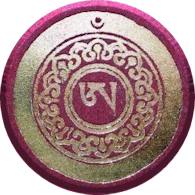
Akong Rinpoché Establishing Buddha-Dharma
Part Two: An Initial Hesitation
 Most people associate Akong Rinpoché with endless building projects and a constant wish for expansion, in nearly all the fields of his very varied activity. He became famous for helping other people “see large” and for broadening their vision of what was possible and for helping them aim much higher than they would normally. That was indeed the case but only so after the 1977 visit of the XVIth Gyalwang Karmapa.
Most people associate Akong Rinpoché with endless building projects and a constant wish for expansion, in nearly all the fields of his very varied activity. He became famous for helping other people “see large” and for broadening their vision of what was possible and for helping them aim much higher than they would normally. That was indeed the case but only so after the 1977 visit of the XVIth Gyalwang Karmapa.
Before that he was decidedly reluctant to expand and happy to keep things low-key. There was already one extension project (the white building immediately next to Johnstone House, known for years as the “new building”) that had been launched very early on but this was done not as an expansion for its own sake but through pure necessity, as the old property offered barely enough space to house the residents, let alone paying guests—the main source of income for the centre. In order to offer dormitory bedroom space for guests, most residents at the time lived in small, highly-inadequate spaces, such as tiny attics, converted ends of greenhouses and garden sheds—something possible in those early days before Health and Safety stringency.
The author discussed material expansion of the centre on several occasions during the early 1970s with Akong Rinpoché. At the time, Rinpoché was still very, very unsure of the future of Tibetan Buddhism in the UK and the West and said we needed to “wait and see” whether it would become a proverbial flash-in-the-pan or something that would genuinely be of benefit and take firm root. For the material supports of dharma, he wanted to wait until the demand determined supply and Samye Ling would be obliged to expand, not to mention it becoming able to do so financially because of the income motor provided by being fully-booked for most of the year.
In general—and this was true in many other domains—Rinpoché needed to “feel” something before he could invest himself in it. The Gyalwang Karmapa’s 1977 visit, the massively positive response it brought from people and also the Karmapa’s direct advice about Samye Ling led to the conception of the Samye Project. By some accounts, the Karmapa had seen the long-term future of the centre as something grand. From that time onwards, Akong Rinpoché felt Samye Ling in terms of this potential for great growth and therefore invested much of his energy into developing the material supports that would be needed: first and foremost the temple, which kept him very busy from 1978-1988.
......continue to the next part of the story: a leader and an inspiration
